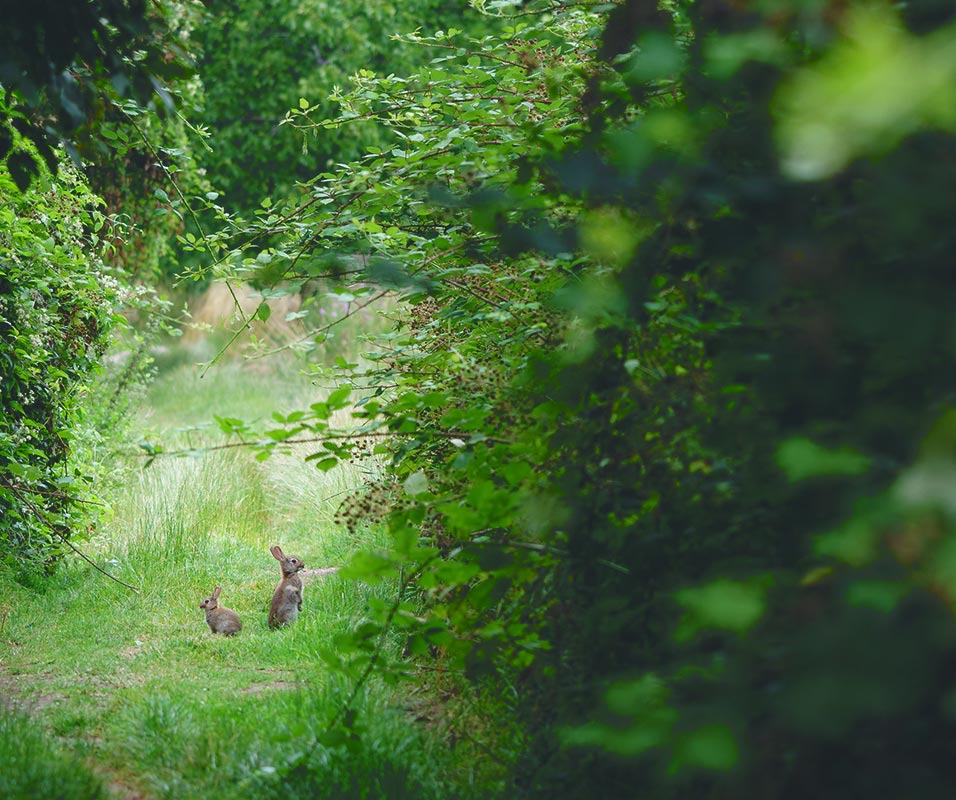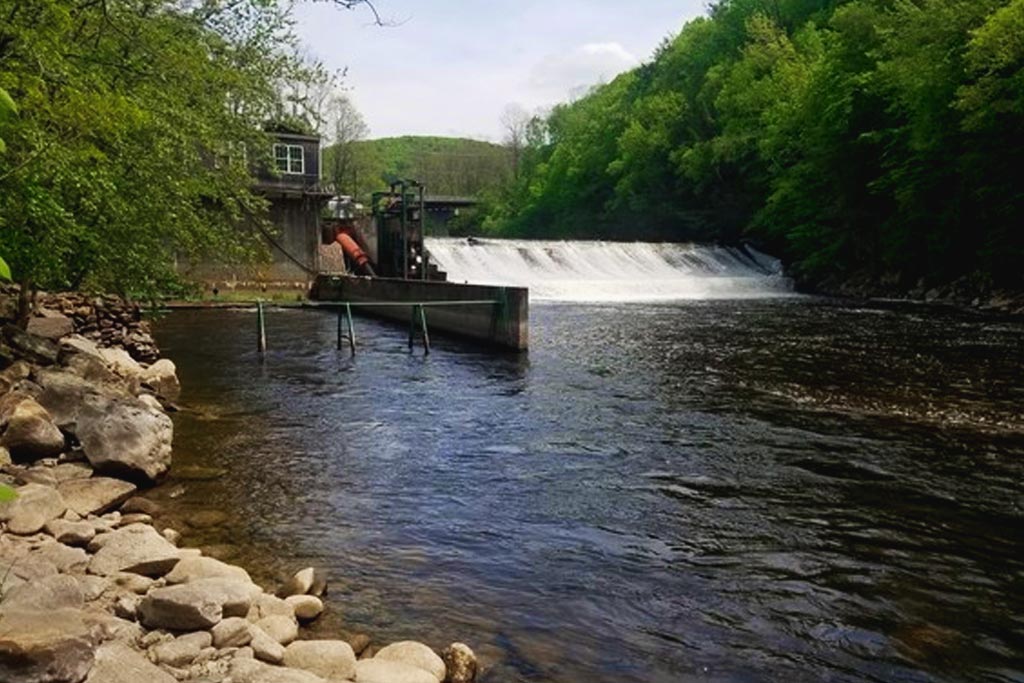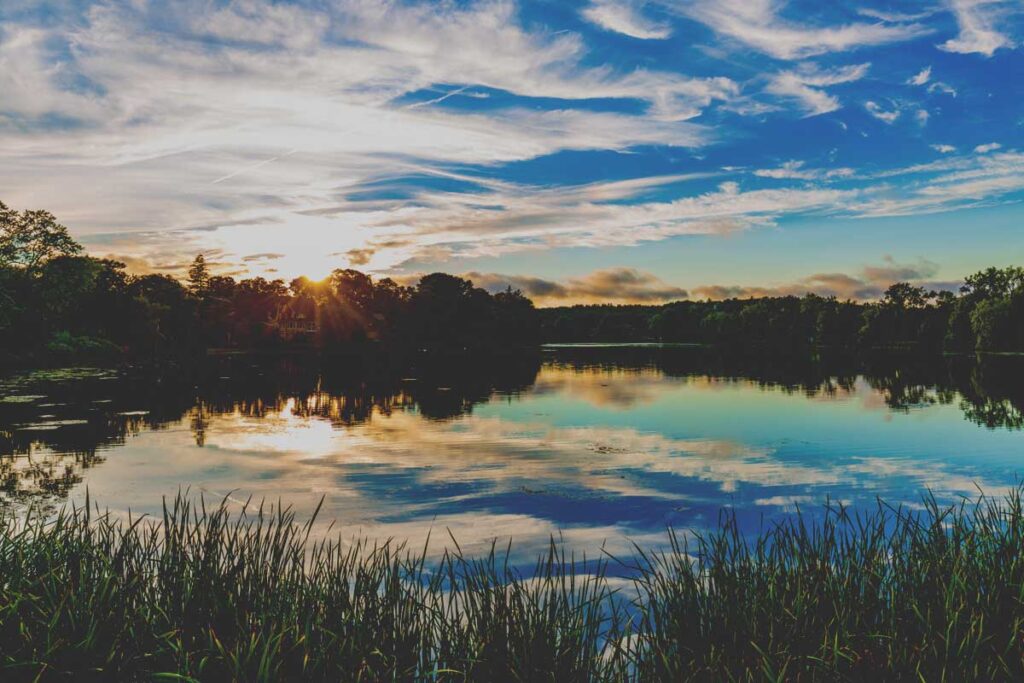Better for the Planet in More Ways Than One
At Rewild, we’re focused on reducing our reliance on fossil fuels by developing clean, local solar energy for communities. But that effort isn’t the whole story. We also believe in preserving the land sited for solar projects by promoting the valuable ecosystem benefits the land provides.
Supporting Land Resilience and Connectivity
Plants and animals need to be able to move to suitable habitats, making connectivity of land critical to encourage this movement – as well as resilience to climate change. We donate proceeds to protect lands that need to be protected in order to facilitate wildlife movement in the face of climate change, and help encourage land connectivity across the U.S.

What Conservation-Minded Solar Looks Like
Rewild is a Solar 2.0 company, which means as the industry matures, we are leading the way in ensuring our company approaches the fight against climate change by reducing carbon emissions and protecting biodiversity. Our solar projects often actually improve the land on which they’re sited by utilizing pollinator species ground cover and sequestering carbon through the soil. It could also mean we avoid chain link fences and instead use wide-hole agricultural fencing so more critters can pass through and use the land under our panels. We avoid sensitive lands by screening each site to avoid critical landscapes or species identified by non-governmental organizations (NGOs), instead siting projects on lands that will realize a net benefit. These lands can include farmland, gravel pits, industrial sites, non-mature forested land, brownfields, landfills, and even large industrial rooftops.

The Critical Tie Between Land Conservation and Renewable Energy
Due to expanding human development, wildlife species in North America are increasingly prevented from naturally finding new, hospitable habitats. At the same time, our need for renewable energy is also increasing to reduce the impacts of climate change. Rewild is committed to making smart, informed decisions about where to build solar sites so the land areas in which species need to move and thrive are kept intact and protected – and are allowed to store massive amounts of carbon, helping offset climate change.

In 2022 Rewild donated $100,000 to The Nature Conservancy to go toward four tremendously valuable tracts of land that exhibit habitat connectivity, resilience, and biodiversity. ReWild has continued to support extraordinary high impact projects with The Nature Conservancy in 2023 and 2024 by donating another $100,000 each year.
What We Look For in a Solar Site
In addition to being adjacent to critical grid infrastructure, we seek lands where solar is a good use for the location and there are opportunities to rewild the land. When we site properties, we look for:
A Need for Rewilding.
Many lands are not productive from a biodiversity perspective. Take a degraded gravel pit, for example. Adding solar can bring in pollinator species, ground cover, habitat and shade for critters, and with time sequester carbon in the ground.
Opportunities for Biodiversity.
Neglected, toxic, or overgrown lands can be rejuvenated through solar energy projects that enable gradual transformation. They can be rewilded to support wildlife species and habitats, leading to conservation efforts that help combat climate change.
Avoiding Sensitive Impacts.
We design our projects to avoid impacting wetlands, protected or endangered species, and sensitive ecosystems. There are great non-governmental organizations (NGOs) out there with mapping systems that identify these areas. We proactively make sure these areas are avoided. Sometimes we are able to even permanently conserve adjacent land.
Lands Protected Through Our Philanthropy
CHILE
Hacienda Puchegüín - Valle de Cochamó (new)
Located in Chilean Patagonia and known as the Yosemite of Latin America, this project will create one of the continent’s largest conservation areas once complete.
- Puchegüín is nearly 330,000 acres including ancient forests, abundant freshwater, habitat for rare species and the spectacular granite domes of the Valle de Cochamó.
- Protection of this property would link a total of over 4.4 million acres of conserved land including iconic parks in both Chile and Argentina.
- Balancing local expertise with global resources, local leaders Pueblo Patagonia are working with TNC, the Holdfast Collective, Patagonia, Inc. and a group of smaller local partners to complete this unique conservation acquisition. The project will create an opportunity to work closely with local communities to improve infrastructure, helping people and nature thrive and diversify economic opportunities in the region.


CHILE
Conserva Puchegüín - Valle de Cochamó (new)
Located in Chilean Patagonia, this project will create one of the continent’s largest conservation areas once complete.
- The Puchegüín property is nearly 330,000 acres including ancient forests, abundant freshwater, habitat for rare species and the spectacular granite domes of the Valle de Cochamó (known as the Yosemite of South America).
- Protection of this property would link a total of over 4.4 million acres of conserved land including iconic parks in both Chile and Argentina.
- Balancing local expertise with global resources, local NGO leader Puelo Patagonia is working with TNC, Freyja Foundation, Patagonia Inc., and Wyss Foundation to complete this unique conservation acquisition. The project will create an opportunity to work closely with local communities to improve infrastructure, helping people and nature thrive and diversify economic opportunities in the region




MAINE
West Branch Narraguagus River: Addition to Spring River – Narraguagus Forest Preserve (new)
The addition of around 3,000 acres to an existing preserve will enhance a conservation region surrounding a high priority aquatic habitat.
- The project contributes to watershed and riparian conservation for the West Branch of the Narraguagus River.
- Adding to the existing 23,000 acre Spring River Narraguagus Forest property, this piece of land will substantially shorten the boundary mileage of the preserve which will make stewardship more straightforward and benefit the ecosystems within the region.
- TNC will own, manage and steward the property in perpetuity, including access to blueberry barren habitats, which can include Wabanaki Tribe co-management of harvests.
The High Peaks Region and the Boundary Mountain Preserve
The High Peaks Region and the Boundary Mountain Preserve are creating major pathways of ecological connection and resilience as the climate warms.
- In the High Peaks Region, more than 13,500 acres between two parcels known as Quill Hill and Perham Stream will be added to nearly 100,000 acres of connected, conserved lands.
- The Boundary Mountains Preserve, nearly 10,000 acres adjacent to more than 22,000 acres of public lands in Quebec, extends a corridor of permanently conserved lands northward to a total of more than 260,000 acres and is a key link in a major pathway of ecological connection from the White Mountains in New Hampshire through the western Maine Mountains and Quebec borderlands and beyond.
Meddybemps Heath
Meddybemps Heath is an ecologically important and unique landscape including the second largest domed bog ecosystem in eastern Maine.
- In addition to the ecological benefits provided by the land, this project includes a significant land return to a native tribe, the Passamaquoddy.
- This eastern Maine project includes 6,700 acres of conservation, 2,800 of which will be returned to the Passamaquoddy Tribe. The land return includes a key piece of the heath itself along with adjacent forested lands and lakeshores.
- A Focus Area of Statewide Ecological Significance, the heath has been designated by the State as high value Inland Waterfowl and Wading Bird Habitat, and the diverse lands are of vital importance for their watershed, habitat, and cultural values.
WEST VIRGINIA
Canaan Valley and Dolly Sods region
In West Virginia, we’re helping The Nature Conservancy protect 4,490 acres of unique “keystone” connector habitat in the Canaan Valley and Dolly Sods region, a last opportunity to connect the southern Appalachia and northern Appalachia regions.
- Acre for acre, this property is among the most important unprotected areas in all of the Appalachians. The protected land will contribute to climate resilience, conserving wetlands and headwater rivers, and will help expand connections to
- This project is in a coal-producing area, and an area of imminent threat of subdivision and second home development. Conservation of this land helps maintain the lands and helps bolster climate resilience by ensuring coal resources under the tract stay in the ground, avoiding harmful emissions.
Shenandoah Mountain
This roughly 2,000 acre property, referred to as the ‘Ours Tract’ is an important puzzle piece in a larger 16,000 acre corridor of lands to be permanently protected by TNC.
- A forested mountain top, grassed valleys, water resources, and agricultural lands make this area an important habitat for many species.
- Several rare plant species, golden eagle wintering grounds, and habitat for many migratory birds are just a few of the specific ecological benefits provided by the Shenandoah Mountain area.
- Only a few hours from the Washington D.C. area, this land is under increasing development pressure and permanently conserving it will ensure that it continues as a keystone in the landscape.




KENYA
Northern Rangelands
Rewild is also helping protect land outside of the U.S. in Kenya’s northern rangelands, called “Room to Roam.”
The rangelands sustain both Kenya’s iconic wildlife and Indigenous communities. Land fragmentation and unsustainable grazing of livestock are fracturing habitat and migration corridors. Development pressure is growing, putting nature and pastoralist cultures at risk.
- The Nature Conservancy has created beneficial partnerships with private and community conservancies and is working to secure three privately-owned parcels, comprising 53,500 acres, by transitioning them into wildlife conservancies.
- These conservancies, which will be held and managed by Kenyan trusts, will be essential pieces in a vast mosaic of savannah habitat that is home to some of the world’s most beloved wildlife, including the iconic Big Five: lion, leopard, elephant, rhino, and African buffalo. The conservancies will also support a sustainable future for local communities that share this irreplaceable landscape.
NEW HAMPSHIRE
Fiske Mill Dam
Rewild has contributed to the acquisition of the Fiske Mill Dam along the Ashuelot River.
- The removal of the dam will connect 20,000 acres of conserved areas upstream of the dam and will reconnect 154 miles of migratory fish spawning habitat to nearly 640 miles of downstream rivers, streams, and ultimately the Atlantic.
- This project highlights the importance of the intertwined relationship between land and water. Conserving forests helps to protect the freshwater sources that are located in or run through those lands. And conserving and reconnecting the freshwater that runs through and links our forests means allowing a safe passage for wildlife to move through developed parts of the landscape.
- One of the most impactful near-term opportunities to remove a freshwater barrier in the Northern Appalachians, the Fiske Mill Dam removal would protect habitat for birds, mammals and fish and improve water quality for humans and natural communities.




MASSACHUSETTES
Mill River Dam (new)
Years in the making, this proposed dam removal is a collaborative river restoration project in a priority watershed.
- Designated as a Significant Hazard dam in unsafe condition by the State of Massachusetts, TNC, the Connecticut River Conservancy, and others have targeted this dam removal for decades.
- The removal of the Mill River dam will reconnect 63 miles of perennial stream habitat above the dam, plus an additional 28 miles of intermittent stream habitat.
- In addition to benefiting aquatic habitat for fish, eel, turtle and mussel, this project will reduce flood risk, result in cleaner water, and create new recreational opportunities along the Mill River and the Connecticut River.
Coles Brook
A 25-mile protected land corridor along the Westfield River and its tributaries, Coles Brook is a combined land and water project and part of a larger effort to conserve around 600 acres from 9 different conservation projects that will add significantly to the resilient wilderness in the region.
- Conserving this land and water project is a priority for TNC and multiple state agencies and it is clear why. The project preserves an important freshwater corridor and the area abuts or is adjacent to multiple state forests, helping to facilitate crucial linkages that can be critical to the goal of achieving landscape connectivity.
- It is likely that some of these lands will be held as a flagship preserve, allowing for open space and access to the public to enjoy the natural beauty of this wilderness.
$100,000x3
Given in 2022, 2023 and 2024
10
Projects Protected
Rewild has helped contribute to the conservation of hundreds of thousands of acres within the most sensitive, biodiverse ecosystems.
More on Our Approach
Solar Energy
We develop and construct solar energy systems that provide up to 35 years of renewable energy while improving the lands on which they’re sited.
Our Partners
The positive impact we can make on the environment wouldn’t be possible without the individuals, businesses, and communities joining us in our mission.
Land Conservation
Solar energy helps reduce our reliance on fossil fuels, but we also believe in preserving the land sited for solar projects by preserving the ecosystem it provides.


